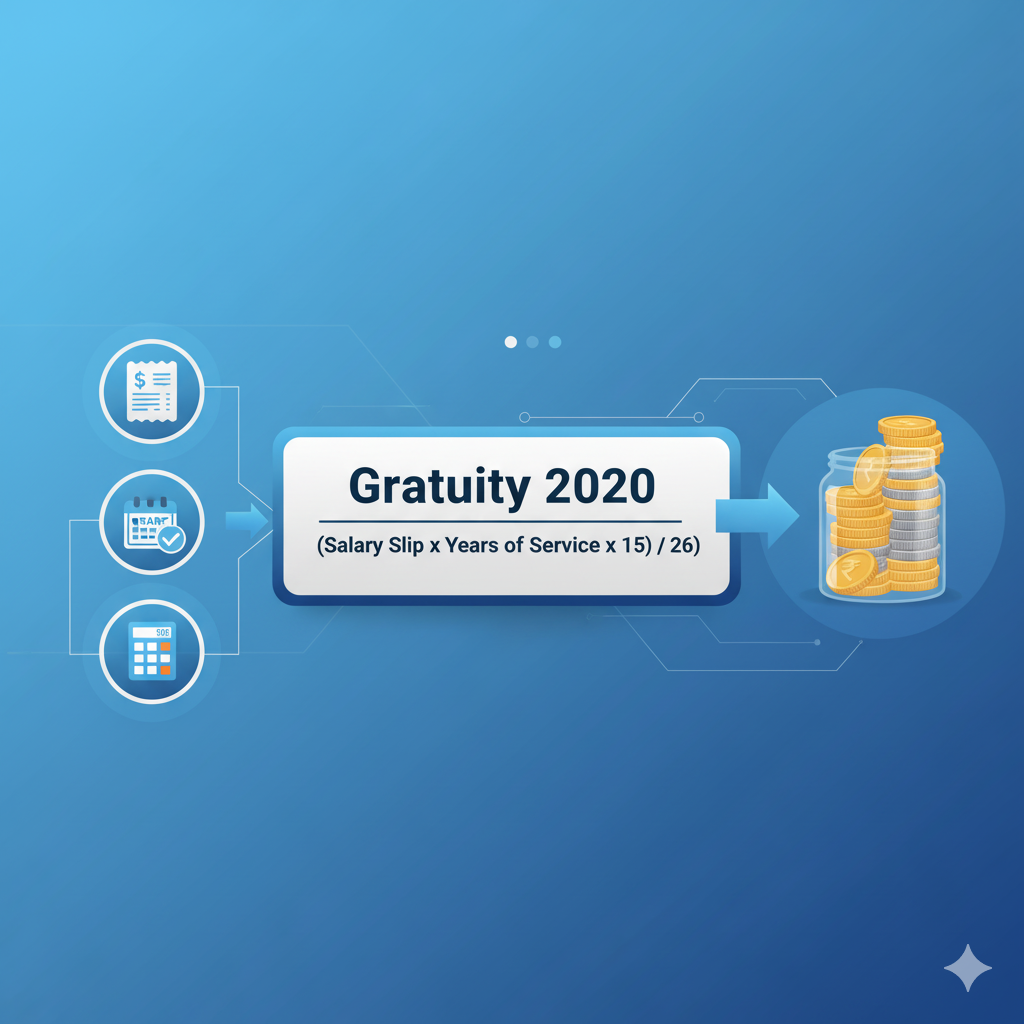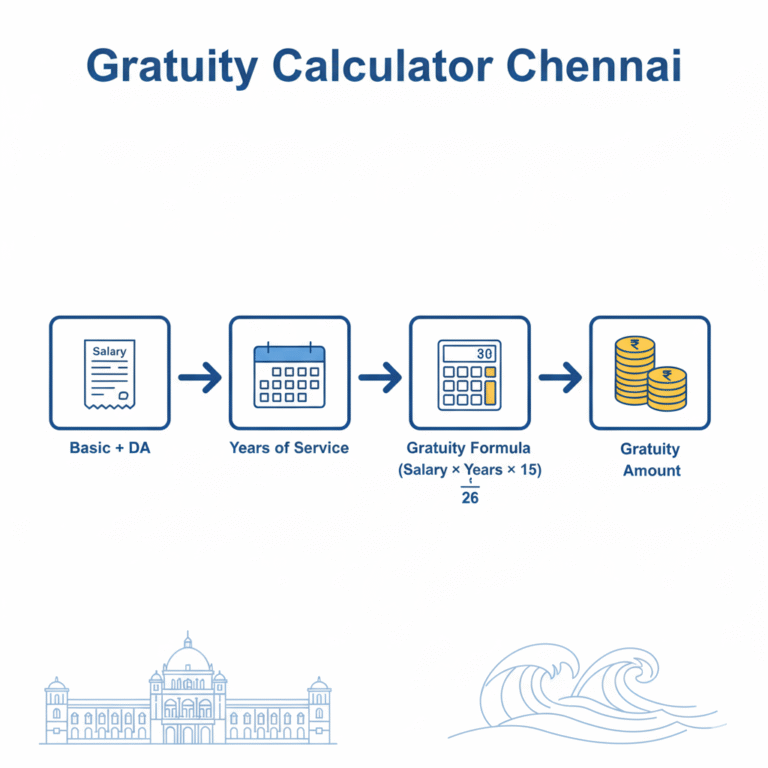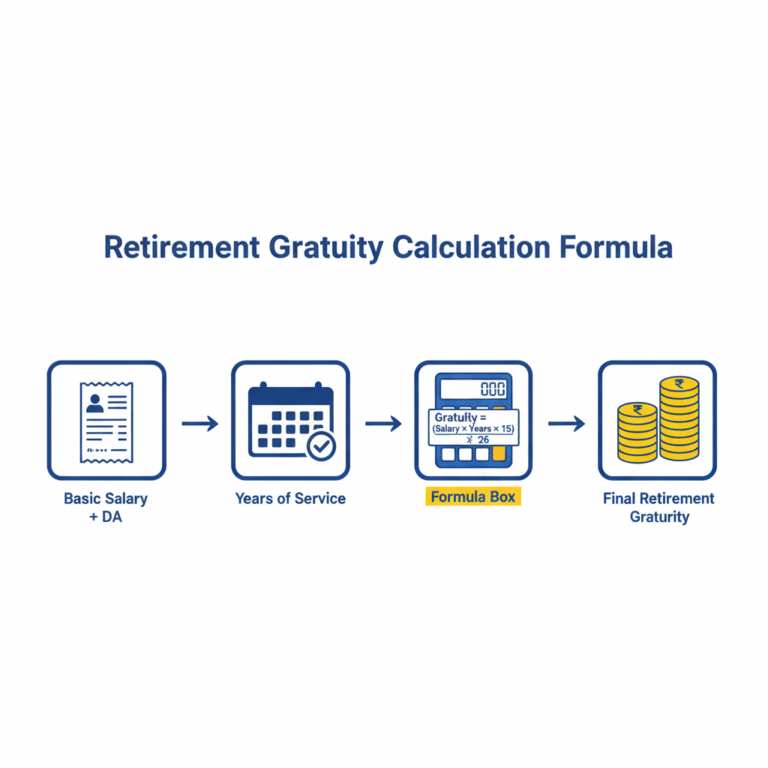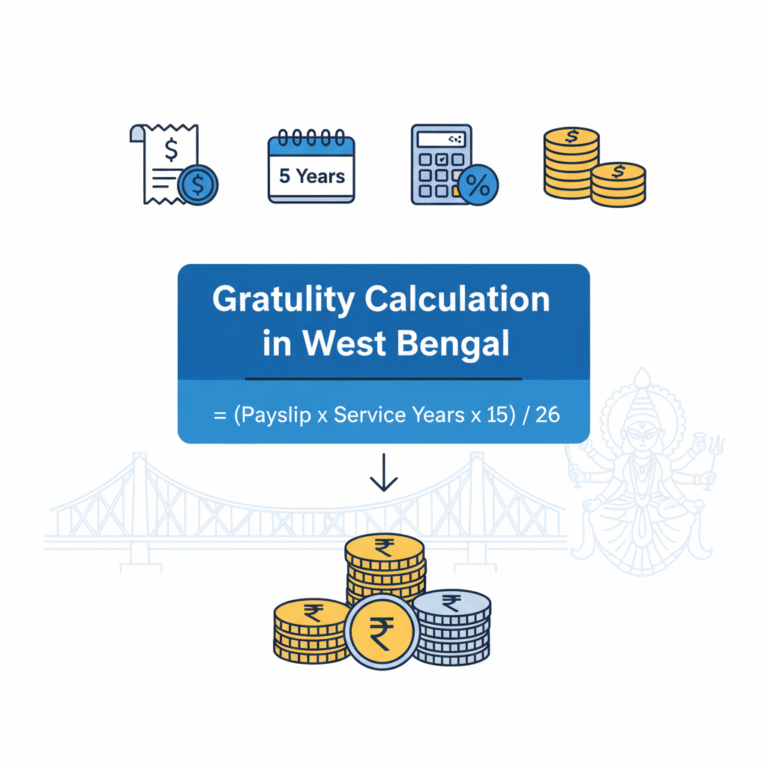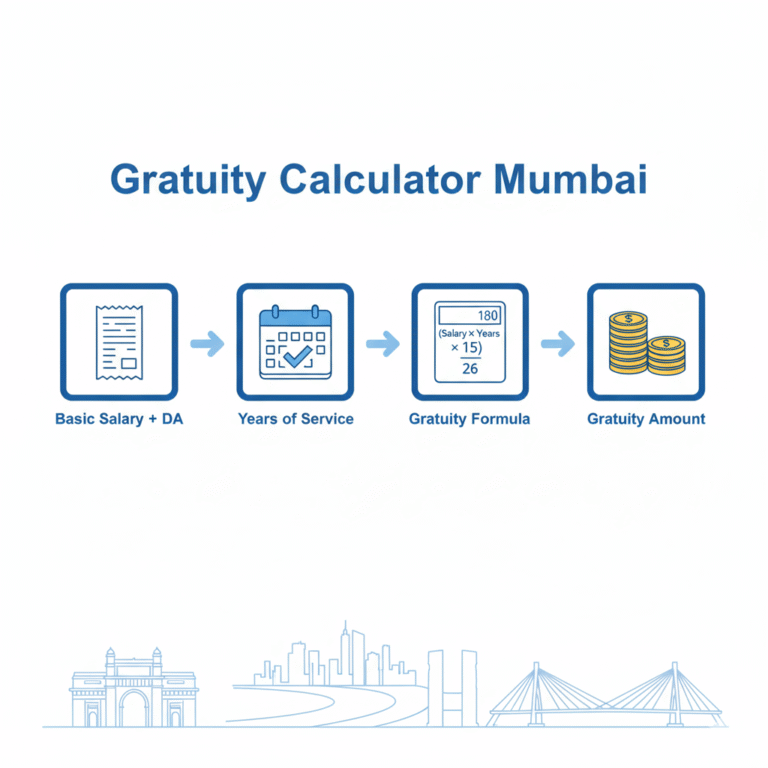Gratuity calculation formula 2020 — eligibility and tax rules
Gratuity is one of the most important end-of-service benefits for employees. Whether you are planning retirement, switching jobs, or auditing company payrolls, understanding the gratuity calculation formula 2020 and the rules that govern it ensures you claim what you are due and helps employers set aside the right liability. This guide explains the statutory framework, step-by-step computation, common variations, tax treatment, sample calculations, and practical tips to avoid mistakes.
What gratuity is and why it matters
Gratuity is a lump-sum payment made by an employer to an employee as a token of appreciation for long and continuous service. It is a form of terminal benefit, sometimes grouped with pension, provident fund, and severance pay, and is designed to provide financial security when service ends because of retirement, resignation, disability, or death. The Payment of Gratuity Act provides the statutory foundation for many establishments, while other employers may have contractual policies.
The Payment of Gratuity Act defines when gratuity applies, the rate at which it accrues, grievance redressal mechanisms, and certain limits. For employers and payroll professionals, the legal text remains the touchstone for disputes and compliance. Chief Labour Commissioner
Which employees are eligible and the basic rule of thumb
Eligibility depends on two things: the nature of the employer (whether covered under the Payment of Gratuity Act) and the employee’s length of continuous service. The typical cutoff for statutory eligibility is five years of continuous service. However, there are exceptions: death or permanent disability removes the five-year requirement and gratuity becomes payable irrespective of tenure. Employers not covered by the Act may still pay gratuity by contract. Groww
The core formula(s) you need to know
There are two widely used formulas depending on whether the employer falls under the Payment of Gratuity Act or not. The differences are minor in structure but important in the divisor used to convert monthly salary into daily wages.
For establishments covered under the Payment of Gratuity Act, the commonly accepted statutory computation used by payroll calculators is:
Gratuity = (Last drawn salary × 15 × Number of completed years of service) ÷ 26
Here, “last drawn salary” generally means basic salary plus dearness allowance (DA) if DA is part of salary. The number 26 represents the presumed number of working days in a month used for the actuarial conversion. This formula is the baseline used by many banks and advisory sites and reflects how statutory 15 days’ wage per year is operationalized into a monthly calculation. ICICI Direct
For employers who are not covered under the Act or who prefer to compute on a calendar-day basis, another common variant is:
Gratuity = (Last drawn salary × 15 × Number of completed years of service) ÷ 30
The divisor 30 converts monthly salary into per-day wages using a standard 30-day month. Many private employers use 30 as a denominator for pragmatic reasons. Both approaches are defensible when supported by contract terms; the key is consistency and adherence to either statute or agreement. Tradejini
Which formula applies in practice
If your establishment is covered by the Payment of Gratuity Calculation Formula 2020 Act, you should use the 15/26 formula unless your employer’s standing policy or an express contract provides otherwise. If you are not covered under the Act and your employment contract or company policy specifies a method, the contractual method applies. When no contract exists, courts have sometimes looked to industry practice, fairness and reasonableness. Always document the basis used for the calculation to avoid disputes. ICICI DirectTradejini
Step-by-step computation with examples
To make the computation concrete, follow these steps.
Step 1: Confirm coverage under the Payment of Gratuity Calculation Formula 2020 Act and check the company policy for any contractual override.
Step 2: Identify the “last drawn salary.” This normally includes basic pay plus dearness allowance (DA). Other allowances are usually excluded unless they form part of “wages” as per the company’s defined pay structure.
Step 3: Count completed years of service. Generally, only fully completed years count unless local rules treat more than six months as a full year; check the employer’s policy and applicable statutory guidance.
Step 4: Apply the divisor (26 or 30) per the applicable formula and perform the arithmetic.
Example A — Statutory employer using 15/26:
Last drawn salary (basic + DA): ₹45,000
Completed years of service: 12 years
Gratuity = (45,000 × 15 × 12) ÷ 26
= (45,000 × 180) ÷ 26
= 8,100,000 ÷ 26
= ₹311,538 (approximately)
Example B — Non-statutory employer using 15/30:
Last drawn salary (basic + DA): ₹45,000
Completed years of service: 12 years
Gratuity = (45,000 × 15 × 12) ÷ 30
= (45,000 × 180) ÷ 30
= 8,100,000 ÷ 30
= ₹270,000
These examples demonstrate how the denominator materially affects the payable amount. For payroll accounting and budgeting, it is useful to compute both ways and confirm which basis is contractually or lawfully applicable. ICICI DirectTradejini
Counting years and partial years explained
The term “completed years” is central. For most practical purposes, only completed full years of service are counted. Yet many employers round up when the employee has served more than six months in the final year, treating it as a completed year forGratuity Calculation Formula 2020. This is often a policy decision and can vary based on the employer’s internal rules or collective bargaining agreements.
If the employment ends because of death or permanent disability, gratuity is typically computed up to the date of death or disability, and any part of a year exceeding six months may be rounded up to a full year. Check local rules and the employer’s policy language for precise rounding conventions. Groww
What is “last drawn salary”
“Last drawn salary” is typically basic pay plus dearness allowance (DA). Other allowances such as housing allowance, conveyance, bonus, commission, overtime, and variable pay are generally excluded unless explicitly included by the company’s terms. Because the inclusion or exclusion of an allowance can significantly impact the gratuity figure, payroll teams should ensure the salary elements used in the calculation match the employer’s definitions and statutory guidance.
Practically, always record the payroll components used when generating gratuity calculations and attach this as supporting documentation to payroll records. This reduces disputes and clarifies audit trails.
Maximum limits, caps and tax exemption
Two separate concepts are often conflated: the maximum gratuity amount under the Payment of Gratuity Act and the tax-exempt limit for gratuity under the Income Tax Act. Historically, the Payment of Gratuity Act specified an upper ceiling on the gratuity payable under the Act. At various times governments have revised or interpreted these ceilings, and tax exemption limits have also been adjusted nationally.
For tax purposes, legislation and notifications have increased the tax-exempt ceiling for gratuity under Section 10(10) of the Income Tax Act. As per authoritative guidance and widely used tax references, the tax-exempt limit was raised to ₹20 lakh for most employees (from the earlier ₹10 lakh ceiling). This change affects how much of the gratuity is exempt from income tax when received. Always verify the exact year of applicability and the notification details when preparing tax computations. ClearTax
Statutory nuance and official text
The Payment of Gratuity Act (the statutory instrument governing gratuity in many jurisdictions) contains the operative legal language on payment rates, establishments covered, enforcement, and procedural matters. Payroll and HR teams should consult the official Act and any Ministry notifications for the definitive legal position and for any amendments that modify ceilings or applicability. The government’s labour department site provides the Act text and the authoritative legal position. Chief Labour Commissioner
Tax treatment and how to compute taxable Gratuity Calculation Formula 2020
When gratuity is received upon retirement, resignation, or other qualifying events, IRS-style rules (or local tax laws) determine how much of it is tax-exempt. In India, Section 10(10) of the Income Tax Act allows an exemption subject to specified limits and formulas. If the gratuity received exceeds the tax-exempt threshold, the excess becomes taxable as salary income and is taxed according to the recipient’s slab rates.
In practice, payroll teams compute the exempt portion first (based on statute and any prescribed formula) and then compute taxable gratuity as the difference between the total Gratuity Calculation Formula 2020 and the exempt portion. For exact tax figures in a particular assessment year, use the tax authority’s calculation tools or official guidance. The Income Tax Department provides a gratuity calculator to help compute exempt and taxable portions under current tax law. Income Tax India
Common mistakes to avoid
Mistakes in Gratuity Calculation Formula 2020 computation can create liabilities, employee dissatisfaction, and compliance risks. Common errors include
- Using gross salary instead of basic + DA
- Ignoring contractual terms that supersede the standard formula
- Incorrectly rounding or counting incomplete years
- Failing to apply statutory ceilings or tax exemption limits correctly
- Not documenting the basis used (divisor 26 vs 30, inclusions/exclusions)
A best practice is to create a standard operating procedure for Gratuity Calculation Formula 2020, keep the formula and payroll inputs in the employee file, and have a second person validate calculations for departures or retirements.
Practical examples for different scenarios
Example 1 — Employee resigns after 7 years and 8 months; employer covered under the Act; last drawn basic + DA ₹60,000. Many companies round up when more than six months are served in the final year, so service is treated as 8 completed years.
Gratuity = (60,000 × 15 × 8) ÷ 26 = (60,000 × 120) ÷ 26 = 7,200,000 ÷ 26 ≈ ₹276,923.
Example 2 — Employee in a small firm not covered by the Act, served 4 years and 10 months but suffered a qualifying permanent disability. Because disability triggers Gratuity Calculation Formula 2020 despite less than five years, compute gratuity using the agreed formula; if the firm uses 15/30:
Gratuity = (last drawn salary × 15 × years)/30 — rounding treated per policy.
These examples stress the importance of checking coverage, service rounding rules, and the precise salary components included.
Accounting implications and employer provisions
From an employer’s accounts perspective, Gratuity Calculation Formula 2020 is often treated as a long-term liability. Many firms fund Gratuity Calculation Formula 2020 Calculation Formula 2020 liabilities through Gratuity Calculation Formula 2020 funds or buy group Gratuity Calculation Formula 2020 insurance with insurers. Accounting standards require estimation of future gratuity obligations and may demand actuarial valuation if a defined benefit plan is used. Even if not legally required, prudent financial planning recommends setting aside a provision for gratuity based on projected retirements and resignations.
HR and payroll should liaise with finance to ensure Gratuity Calculation Formula 2020 accruals reflect actual liabilities and are reconciled periodically.
Gratuity during pandemic or irregular employment
Events such as prolonged leaves, sabbaticals, temporary layoffs, or pandemic-related suspensions can complicate “continuous service” calculations. Many tribunals and courts have looked to employment terms and statutory interpretation to decide whether interrupted service counts for Gratuity Calculation Formula 2020. Where possible, spell out continuity rules in offer letters and employee handbooks, and if special events occur, seek legal or labour-department guidance. Documentation of temporary closures, official communications, and leave approvals helps in later adjudication.
Disputes, appeals and enforcement
If an employee believes Gratuity Calculation Formula 2020 has been underpaid, the Payment of Gratuity Act sets out mechanisms for filing claims and appeals. Labour authorities and tribunals handle disputes; for the employer, timely and accurate recordkeeping is the best defense. If a legal dispute arises, courts will examine employment contracts, payroll records, company policies, and applicable statute. Prompt settlement and mediation often reduce costs and reputational risk.
How to present a Gratuity Calculation Formula 2020 calculation in the payslip and final settlement
Transparency helps avoid confusion. A final settlement statement should include
- A clear statement of the basis used (e.g., “Gratuity calculated as (basic+DA × 15 × years) ÷ 26 per Payment of Gratuity Act”),
- Inputs used (last drawn basic salary, DA, completed years of service),
- The arithmetic (showing the intermediate multiplication and division), and
- Any tax deductions or exemptions applied.
A signed acknowledgement from the employee upon receipt of the Gratuity Calculation Formula 2020 and the settlement statement is recommended for recordkeeping.
Sample template of a calculation summary
Write a short explanatory narrative in the settlement letter rather than dense tables. Example:
“Pursuant to the Payment of Gratuity Calculation Formula 2020 Act and company policy, Gratuity Calculation Formula 2020 is computed using last drawn basic pay plus DA, multiplied by 15 days for each completed year of service and divided by 26. Last drawn basic + DA: ₹45,000. Completed years: 12. Calculation: (45,000 × 15 × 12) ÷ 26 = ₹311,538. Tax exemption applied as per Section 10(10), resulting in taxable gratuity of ₹X.”
This narrative approach clarifies the methodology and reduces the chance of misunderstanding.
Digital calculators, tools and reconciliation
Many financial portals and banks offer Gratuity Calculation Formula 2020 calculators to estimate entitlements. These calculators typically implement the 15/26 or 15/30 formulas and can be useful for quick checks. However, because legal and tax rules change over time, always validate the assumptions (divisor, salary components, rounding rules) before treating a calculator result as definitive. For tax computations, use the official tax department tools or calculators for the given assessment year. Income Tax IndiaICICI Direct
Recent changes and limits you should know
Legal and tax ceilings may change. For example, the tax-exempt limit for Gratuity Calculation Formula 2020 under the income tax provisions was increased to ₹20 lakh (from a prior limit of ₹10 lakh) for qualifying payments, following government notifications. Employers should monitor official announcements and circulars to ensure the correct ceiling is applied for tax exemption and reporting. Also check whether the Payment of Gratuity Act’s statutory ceiling (as applied in some contexts) has been adjusted by statute or notification. When in doubt, consult official ministry releases or a qualified tax advisor. ClearTaxChief Labour Commissioner
Best practices for HR and payroll teams
- Maintain a gratuity policy document aligned with the Act and contract terms.
- Standardize the definition of “last drawn salary” across the organization.
- Reconcile gratuity liabilities quarterly and liaise with finance for provisioning.
- Document rounding rules and the company position on partial years.
- Keep updated on tax exemptions and statutory ceiling changes and update payroll systems promptly.
- Use signed settlement statements to close cases.
Employer checklist before final payout
Before releasing gratuity, confirm:
- Employee identity and service dates match HR records.
- Salary components used are correctly recorded.
- The applicable formula and divisor are documented.
- Tax exemption limits have been correctly applied.
- Any statutory filings or notifications required have been completed.
A simple checklist reduces errors that can lead to penalties or employee grievances.
Common edge cases and how to handle them
- Employee with multiple spells of service due to rejoining: total continuous service calculation can be contested; check contractual terms and statutory precedent.
- Change in pay structure right before exit: unless expressly backdated allowances are paid, Gratuity Calculation Formula 2020 normally uses the last drawn actual basic + DA.
- Part-time workers and contractual employees: apply contractual terms; if covered by the Act, pro-rata rules may apply.
- Death in service: Gratuity Calculation Formula 2020 payable to nominee; rounding is generally favorable to the nominee in many schemes.
Interpret these cases conservatively and document decisions.
Glossary of terms
- Last drawn salary: Basic pay plus dearness allowance used in the formula.
- Completed years of service: Number of full years of service counted for Gratuity Calculation Formula 2020.
- Divisor 26/30: Number used to convert monthly pay into daily wages (26 working days or 30 calendar days).
- Tax-exempt ceiling: Maximum amount exempt from income tax under the law.
Frequently Asked Items (format without question marks)
Closing notes: how to use this guide and next steps
This guide is intended to help HR professionals, payroll specialists, employees and advisors understand the practical mechanics of the gratuity calculation formula 2020 and related issues. Because statutory ceilings, tax exemptions and administrative rules can change, always validate key numbers against official government notifications or trusted tax advisories before finalizing payouts.
If you need, I can produce: a downloadable Excel template that computes Gratuity Calculation Formula 2020 using both 15/26 and 15/30 formulas, a sample settlement letter tailored to your jurisdiction, or a short checklist for payroll teams to follow on every employee exit. Tell me which of these you want and I’ll create it right away.
Key references used for the most critical points in this article
- Payment of Gratuity Act (official text), Chief Labour Commissioner (Central). Chief Labour Commissioner
- Standard 15/26 gratuity calculation approach used by financial institutions and payroll guides. ICICI Direct
- Alternate 15/30 approach for employers not covered under the Act. Tradejini
- Eligibility and general rules overview on gratuity and coverage. Groww
- Tax exemption ceiling increase and related tax guidance. ClearTax

